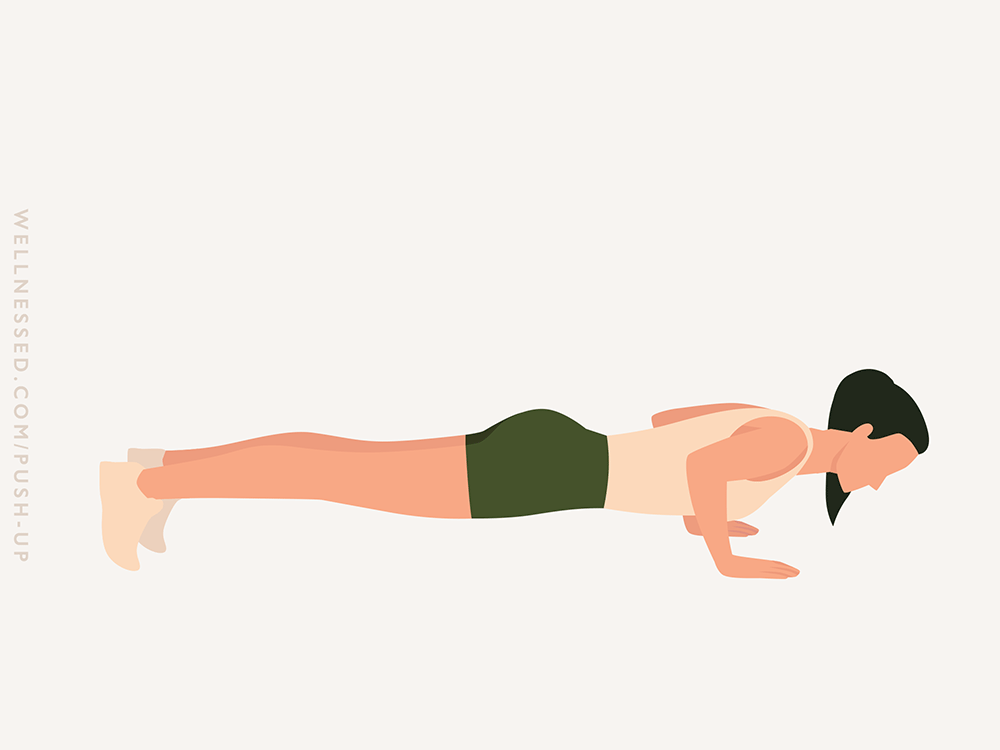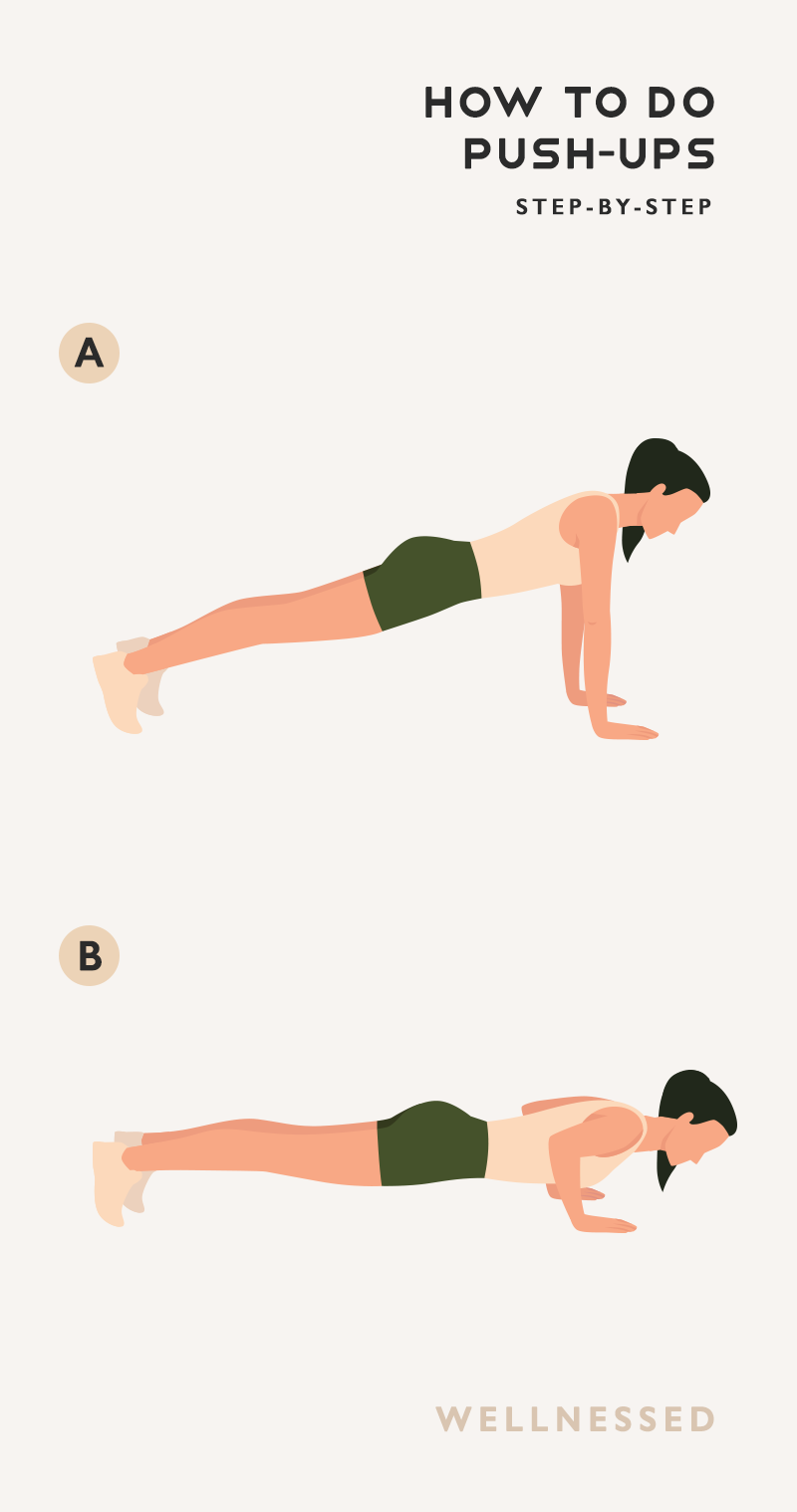- Main muscles worked: Chest
- Other muscles: Shoulder, arms, core
- Exercise type: Compound, horizontal push
- Equipment: None
Push-Up Benefits
The primary muscles targeted by push-ups are those of the upper body, especially the chest and shoulders.1 Performing push-ups regularly develops upper-body strength, power, and muscular endurance.2 They make daily activities easier and also boost sports performance.
Widely used as a therapeutic exercise to improve shoulder function in rehab, push-ups strengthen the muscles around the shoulder, and improve shoulder joint stability and proprioception.3 Being able to perform more push-ups is also linked a lower chance of developing heart disease.4
Push-ups are often used as a fitness test to measure upper body strength. Take the test and see how you stack up, or use it to keep tabs on your progress.
Tips to Perfect Your Push-Up Form
Despite being an upper body exercise, keeping your whole body tense will help you perform this exercise better. Make sure you tense your legs, butt and abs when completing push-ups and do not allow your lower back to arch or hollow.
Lower yourself down more slowly than you push yourself back up. Imagine you are compressing a spring as you descend and then letting it expand as you push up.
Try to rotate your hands outward as you perform the exercise to activate your lats and deep shoulder stabilizers. This will give you a more solid base from which to push.
Keep an eye on form and fatigue as you perform more reps. When you begin to tire you may start changing your position to take some of the weight off your upper body and shift it onto your legs.
Push-Up Variations
Different push-up variations can shift the focus onto different muscle groups, such as doing unstable push-ups or changing hand and foot positions.5
Switching up the difficulty level and type of the push-up will also change your training outcomes:
- Easier push-ups and more reps builds muscular endurance.
- Harder push-ups and fewer reps increases strength.
- Plyometric push-ups will develop power (e.g. clapping push-ups).
Experiment with different hand positions – wider and narrower than the standard push-up position of shoulder-width apart:678
- Close-grip push-up. Narrower than the standard push-up, these push-ups work the triceps, chest muscles, and back of shoulder more. An example is the diamond push-up.
- Wide-grip push-up. Wider than the standard push-up, it is about 150% of shoulder-width. Works the biceps more, but results in less muscle activation of the chest (pectoralis) muscles.
Push-ups require good core strength. If your core is week it can mean your middle sags when you do push-ups, which puts a lot of strain on your lower back. If you’re a beginner, start with easier push-ups, such as wall push-ups or kneeling push-ups.



